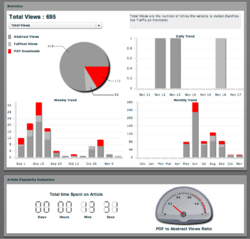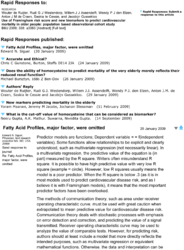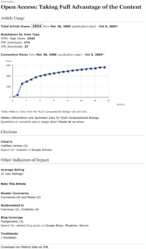Article-level metrics/Gallery
Jump to navigation
Jump to search

| Some visualizations of article-based metrics. | |||||||||||||||||||||||||||||
| |||||||||||||||||||||||||||||




